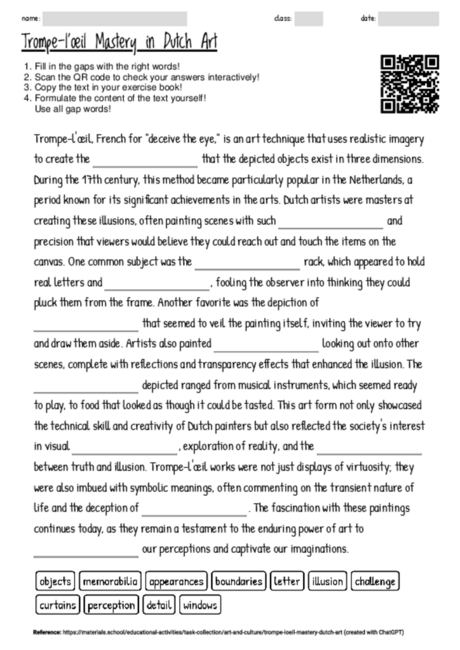Trompe-l'œil Mastery in Dutch Art
Cloze texts serve as an engaging method to enhance reading comprehension and attention to detail, particularly for students aged 12 to 16. By requiring learners to fill in missing words, this approach encourages them to think critically about the text and its context, fostering deeper engagement with the content. The trompe-l'œil text specifically introduces students to a fascinating aspect of art history, merging the study of visual perception with historical insights into 17th-century Dutch society. This not only aids in vocabulary development by exposing students to specific art-related terms but also enhances their understanding of how art can reflect and influence cultural and societal norms. The selection of semantically important terms for omission challenges students to apply their knowledge and reasoning skills to deduce the correct words, promoting active learning. Additionally, the text's focus on the illusionary aspect of trompe-l'œil paintings can stimulate discussions about the nature of reality and perception, encouraging students to explore these concepts beyond the classroom. This cloze text, therefore, not only serves as a tool for language development but also as a gateway to interdisciplinary learning, connecting art, history, and philosophy in an accessible and engaging way.

